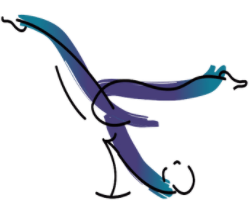Jumpboard and Rebounding Pilates Explained: Elevate Your Performance in Pilates and Beyond
Pilates blends movement and breath in a way that focuses on strengthening the core muscles, especially the muscles of the abdomen, lower back, and hips. The low-impact nature of Pilates is a great intro point to improve flexibility, balance, and control of your body with an emphasis on proper alignment. While Pilates can be done on a mat, you can also bump up your cardio, resistance training, and more by taking a Pilates jumpboard class.
As with any exercise, you should always start at a level that feels right for you. The Pilates jumpboard benefits are enormous for those looking to change their lifestyle, focusing on centering, control, precision, flow, concentration, and breath. The core principles of Pilates effectively transform your body into a slimmer, fitter you.
What Is a Jumpboard?
If you’ve never heard about Pilates jumpboards, it’s wonderful for those who work a desk job. The Pilates jumpboard, also known as a Pilates rebounder, is a solid piece of timber that works with a piece of equipment called a reformer. If you experience lower back pain, shoulder pain, or poor posture, a Pilates jumpboard develops core strengths for better posture and helps alleviate pain in those areas.
Pilates isn’t just about building core muscles or breathing techniques either. The Pilates jumpboard benefits the Lymphatic System as well. The Lymphatic System is tasked with removing waste products from the body by using a clear fluid called lymph. The energetic and fun workout of Pilates helps your body support the Lymphatic System, leading to a better night’s sleep and reduced bloating and digestive problems.
Get Moving With a Rebounder
The Pilates rebounder helps reach and maintain your target heart rate as if you were running on a treadmill, but without the added stress of running on your joints. It’s excellent for building strength, endurance, and lean muscle in your legs. A Pilates jumpboard class even improves your coordination for other sports and activities, like tennis, soccer, and dancing. Initially, Joseph Pilates developed Pilates to give dancers who had been injured a chance to dance again in the early 20th century. Now, it is widely popular because of all of the mental and physical benefits it brings.
If you want to improve your health and create a sense of deeper body awareness, a Pilates jumpboard class deeply emphasizes biomechanics and low-impact intensity. One of the fundamental principles of Pilates is “centering,” which is the idea of finding stability in your core before performing any movement. There are tiny nuances you’ll learn to have your core support your movement.
What Do You Do In A Class?
Ready to work out? While walking into a new class can be exciting and intimidating, you can reap incredible benefits by getting started on your Pilates journey. Classes include warm-ups to properly prepare you for every exercise you’ll do during the class, and they will focus on areas like your abdomen, glutes, inner thighs, legs, and even arm work while jumping. Although Jumpboard can be great for core stability, consult a professional if you have knee and hip issues before starting Pilates.
Get in touch with your body with the Pilates jumpboard and flex those core muscles by checking out a class today.

